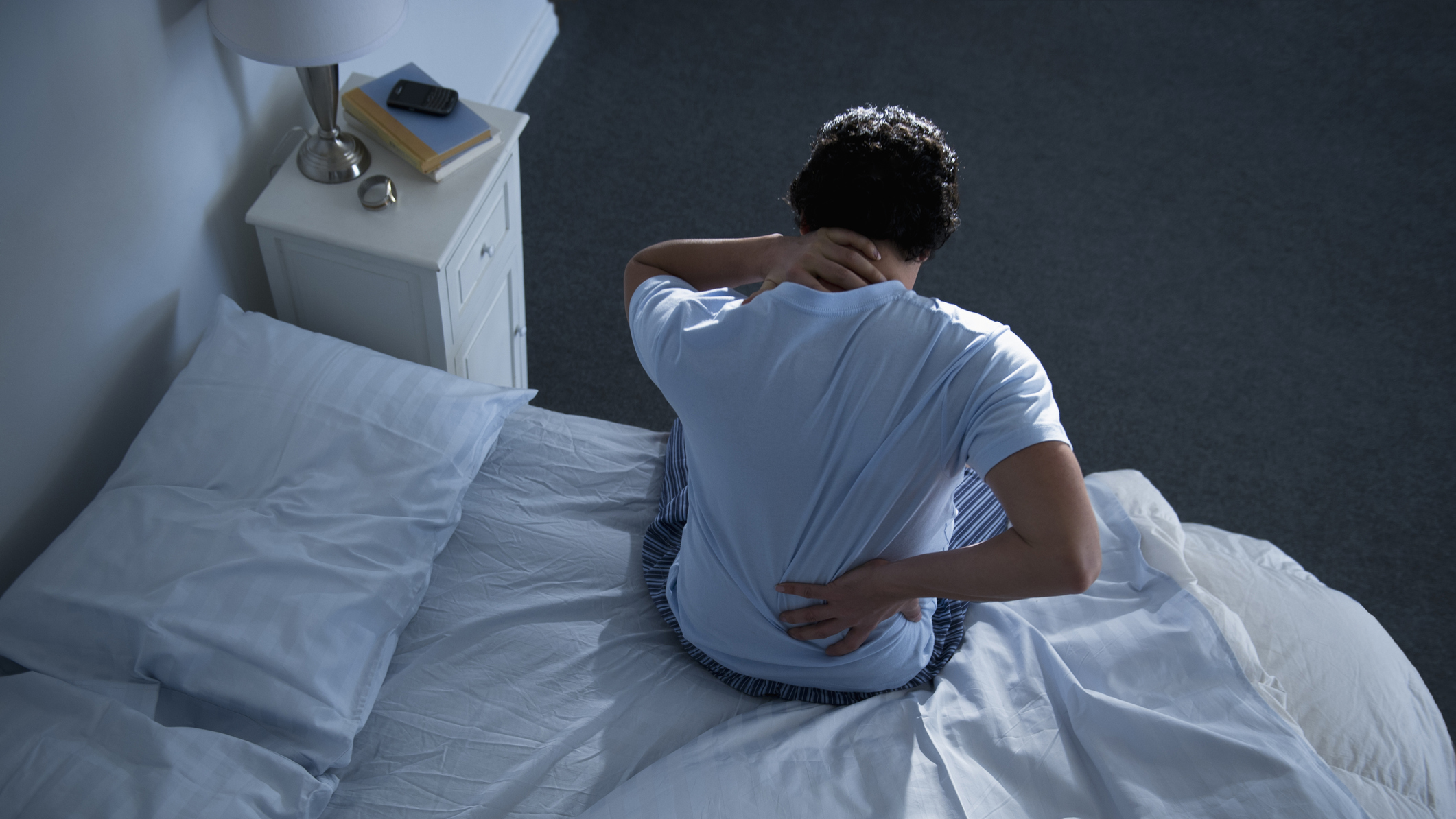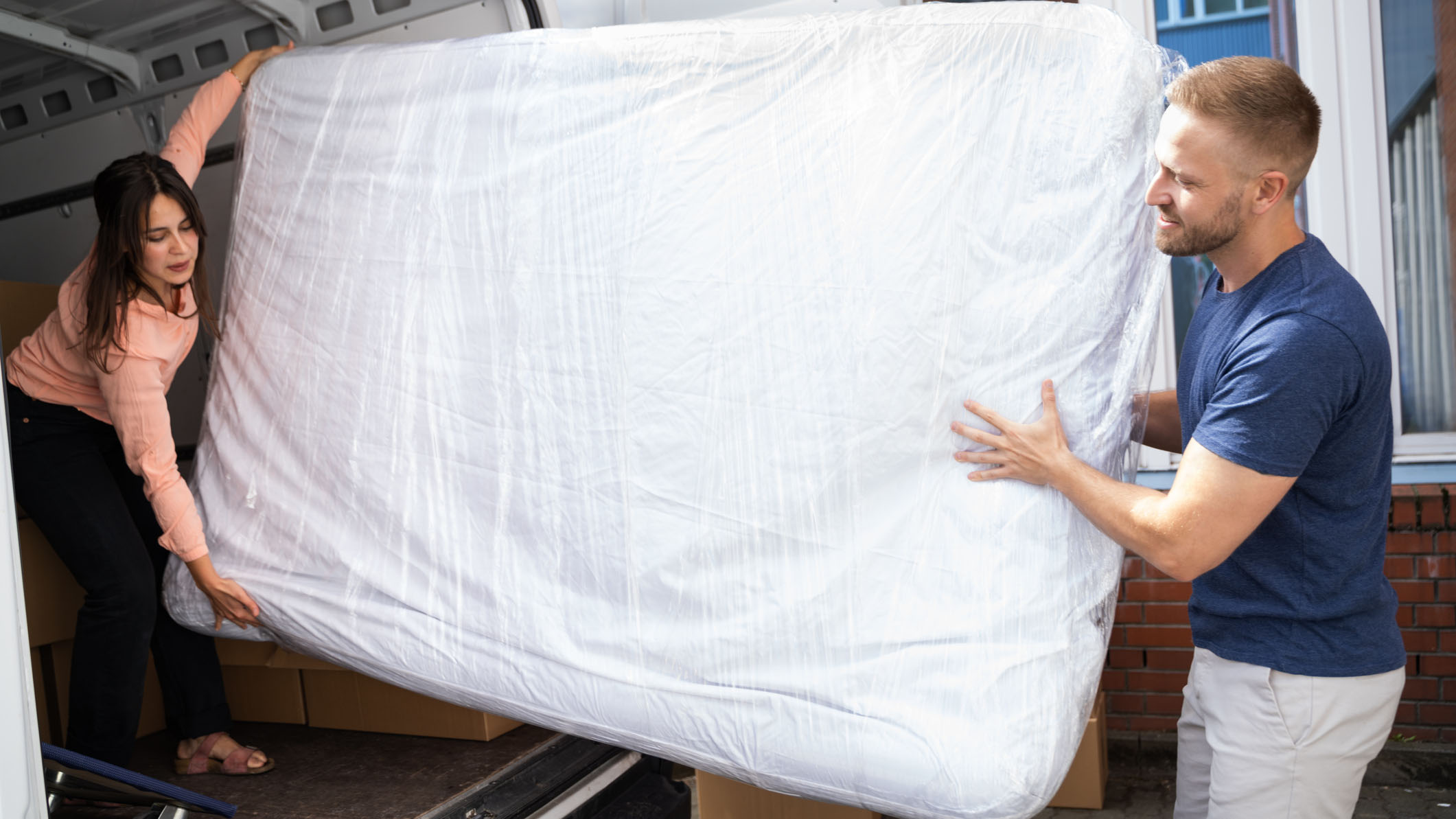5 signs that you’ve chosen the wrong mattress — and how to remedy it
These are the tell-tale signs that your new mattress is wrong for your sleep needs

Buying a mattress online is exciting and easy, not to mention often cheaper than shopping in store. But what happens if you get it wrong and choose a mattress that's more nightmare than dream for your body and sleep needs? Thankfully, there are five tell-tale signs that suggest you've picked the wrong mattress for you. From new back pain to sudden allergies, we list them all here.
After all, even the very best mattresses money can buy aren't perfect for every single person on the planet, so it's vital that you understand how to choose a suitable bed for you – and how to spot the signs that your new bed isn't The One.
We'll also explain how to fix your mattress to make it right for you, whether that means exchanging it within the trial period or investing in some clever accessories to improve comfort and support. Here's what you need to know...
5 tell-tale signs that you’ve chosen the wrong mattress
1. You’re waking up in pain (and never used to)
The right mattress for you is the one that keeps you supported and comfortable. Mattresses can provide soothing relief to pressure points and keep your spine properly aligned. However, if you wake up with back pain, joint pain, or soreness, this could be down to the firmness level.
If you're a side sleeper on a firm mattress, your hips and shoulders will not be cushioned properly and may lead to aches and pains. On the other hand, if you sleep on your stomach and your bed is too soft, your hips will start to sink in to the mattress surface. When hips start to sag into the mattress, your spine begins to misalign which can cause lower back pain.
So, if you're waking up with achy joints or lower back pain, you may need to check if your mattress is too firm or not firm enough.
2. You’re overheating at night
If your room tends to be hot or if you suffer from a condition (such as menopause) which causes you to have hot flashes, overheating at night isn't completely down to your mattress. However, if you don't live in a hot climate or have a condition that causes overheating or night sweats, it may be time to check your mattress if you're sleeping hot.
Get instant access to breaking news, the hottest reviews, great deals and helpful tips.
Some mattress materials have a tendency to sleep hot , especially memory foam. Memory foam traps heat, and all-foam beds don't have the air-circulating addition of coils or springs to fix this problem. While some memory foam beds can be infused with cooling substances such as gel, copper, and graphite, these infusion don't tend to stand up against hot flashes and heatwaves.

3. Your disturbing each other in bed
While the best memory foam mattresses aren't known for their cooling properties, this slow-moving foam is excellent at absorbing the movements of a restless partner so the motion doesn't transfer to your side of the bed. Other beds, however, aren't that great at motion isolation. Innersprings are notorious for their buoyancy, as are some hybrids (such as those made from springs and latex).
If you're constantly being woken up by your partner's movements, it may be because your mattress as high motion transfer and low motion isolation. Check to see if your mattress contains springs, as their bouncy properties may be why you're being disturbed by a co-sleeper's tossing and turning.
4. You’re no longer comfy in your favorite sleep position
If you find yourself having to constantly adjust your sleeping position to feel comfy, this may be a sign that your mattress is completely wrong for your sleep style. For example, if you're a side sleeper and your mattress feels hard against your shoulders, you'll likely find yourself having to roll onto your back to avoid any aches. Sleeping in a position that isn't natural for you can make it harder to fall asleep, and it's a sign that your mattress isn't conducive to your sleep needs.
5. You seem to have developed allergies overnight
If you seem to have developed an allergic reaction when sleeping on your new bed, then it may be down to the mattress material. While a lot of natural and organic beds use hypoallergenic, dust mite-resistant materials such as organic wool and latex, that doesn't mean the mattress is right for you. If you're allergic to latex, for example, you should probably avoid some organic mattresses.
How to remedy a wrong mattress within the trial period

1. Exchange it for a new mattress
Before you decide to exchange or return any mattress, make sure you have slept on it for at least 30 consecutive nights. 30 nights is the minimum timeframe for adjusting to a new mattress, and some mattress brands won't allow you to return your mattress until you've had it for 30 days starting from the delivery date.
If you've slept on the mattress for at least 30 nights and still feel that the mattress is wrong for you, then you have the option to exchange it. This is the best option if you like the mattress and the brand, but feel that the firmness or material is wrong.
For example, if your mattress comes with different firmness options, you could swap your firm mattress for a plush one (or vice versa). Likewise, if your hybrid bed comes a memory foam version, you could exchange it for the all-foam bed instead (or vice versa).
2. Return it for a new mattress
So, you've taken the minimum requirement of 30 consecutive nights to adjust. The bed is wrong for you, the brand doesn't offer any other firmness options, and there's no other version of the mattress in a different material. It's probably best to return it and get a refund.
Get in touch with the brand's customer services and request a refund. While some brands have a return fee, other brands offer free returns and may even collect your unwanted mattress for free.
How to remedy a wrong mattress that can't be returned or exchanged
1. Buy a new bed that IS right for you
If you have the budget to buy a new one (or your mattress is coming up to 10 years old), it may be time to replace it – the forthcoming Presidents' Day mattress sales are an excellent time to do so too. The best thing to do before mattress shopping is to know exactly what type of bed suits your sleep needs (and your partner's if you share a bed).
The first thing to look at is sleep style. If you're a side sleeper (or weigh under 130lbs), you'll want to choose a plush or medium mattress to cushion the pressure points in your shoulders and hips. If you're a back sleeper, then opt for a medium-firm bed, and stomach sleepers (or those who weigh over 250 lbs) should go for a firm mattress for sturdy support and proper spine alignment. For a full breakdown of all the different firmness levels, check out our guide to how firm a mattress should be.

Memory foam beds tend to provide a good amount of sink-in softness for side sleepers, but hybrid beds tend to suit all sleep styles. Latex is also a good all-rounder, but always check the firmness rating on the brand's website.
Next is temperature regulation. If you sleep hot, you can take a look at our picks for the best cooling mattress, but a general rule of thumb is that memory foam retains too much heat for hot sleepers. Meanwhile, hybrids usually have a tier of air-circulating coils for a breathable sleep. Look out for breathable, cooling materials such as organic wool and cotton, latex, Phase Change Material, gel-infused foam, copper, graphite, or trademark cooling fabric GlacioTex.
Couples who share a bed also need to look at motion isolation. Motion isolation stops your partner's movements from being felt on your side of the bed, which is perfect if your partner is a restless sleeper or operates on a different sleep schedule to you.
Memory foam or individually wrapped (or pocket) springs are particularly good at limiting motion transfer, while innerspring beds tend to be the worst at motion isolation. Make sure that you and your co-sleeper discuss what you both need out of a mattress before shopping to avoid the common mistakes couples make when buying their first mattress together.
2. Invest in the right sleep products
There are many reasons why you may not be able to return or exchange your mattress: it's damaged or stained, you've removed the cover, your mattress was marked 'final sale' when you bought it, or your trial period has simply come to an end. If any of these reasons apply to you, then all is not lost.
First of all, you can adjust your mattress firmness or cooling properties by buying the best mattress topper. Some toppers are infused with cooling tech, while other toppers are designed to add softness or firmness to your existing mattress for a fraction of the price.
Other accessories you can buy are bedding, such as a lightweight cooling blanket or hypoallergenic sheets. Another thing you should check is your bed base. Some bed bases, such as a slatted bases, can cause some mattresses (especially memory foam) to sag through the gaps. Instead switch to a divan bed base or a slatted base with narrow gaps.

Frances Daniels is a PPA-accredited journalist and Sleep Staff Writer at Tom's Guide with an MA in Magazine Journalism from Cardiff University. Her role includes covering mattress and sleep news and writing sleep product reviews and buyer's guides, including our Best Hybrid Mattress 2025 guide. She is interested in the relationship between sleep and health, interviewing an array of experts to create in-depth articles about topics such as nutrition, sleep disorders, sleep hygiene, and mattress care. She is also our specialist on mattress toppers — producing bed topper reviews and taking care of our Best Mattress Toppers 2025 guide — and leads content relating to fiberglass-free beds for a non-toxic sleep. Outside of Tom's Guide, she has written for Ideal Home and Marie Claire.
